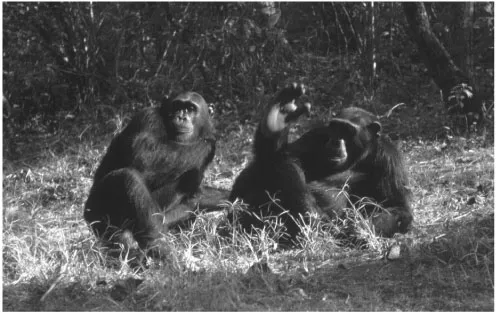
- 446 pages
- English
- ePUB (mobile friendly)
- Available on iOS & Android
Primate Behavior and Human Origins
About this book
This comprehensive introduction demonstrates the theoretical perspectives and concepts that are applied to primate behavior, and explores the relevance of non-human primates to understanding human behavior. Using a streamlined and student-friendly taxonomic framework, King provides a thorough overview of the primate order. The chapters cover common features and diversity, and touch on ecology, sociality, life history, and cognition. Text boxes are included throughout the discussion featuring additional topics and more sophisticated taxonomy. The book contains a wealth of illustrations, and further resources to support teaching and learning are available via a companion website. Written in an engaging and approachable style, this is an invaluable resource for students of primate behavior as well as human evolution.
Frequently asked questions
- Essential is ideal for learners and professionals who enjoy exploring a wide range of subjects. Access the Essential Library with 800,000+ trusted titles and best-sellers across business, personal growth, and the humanities. Includes unlimited reading time and Standard Read Aloud voice.
- Complete: Perfect for advanced learners and researchers needing full, unrestricted access. Unlock 1.4M+ books across hundreds of subjects, including academic and specialized titles. The Complete Plan also includes advanced features like Premium Read Aloud and Research Assistant.
Please note we cannot support devices running on iOS 13 and Android 7 or earlier. Learn more about using the app.
Information
1
The Primates
Primate Biology and Behavior
Common Primate Traits
Grasping
- mobile digits, especially first digits of hand and foot
- flattened nails on some or all digits
- friction surfaces on tips of digits
- sensitive nerve endings on the surfaces of appendages.
Locomotion
- long, muscular legs
- hindlimb dominance (for both braking and acceleration).
Senses
- orbital convergence (for binocular vision)
- postorbital bone structure (protection of the eye).
Dentition
- four types of teeth: incisors, canines, premolars, molars.




Primate Evolution and Classification
Evolution and Natural Selection
Table of contents
- Cover
- Title
- Copyright
- Dedication
- Contents
- List of figures
- Preface
- Acknowledgements
- Introduction
- 1 The Primates: Meet Your Relatives
- 2 The Study of Primate Behavior
- 3 Primate Ecology and Behavior: Common Features
- 4 The Strepsirrhine Suborder
- 5 The Lorisiform Infraorder: Strepsirrhines in the Dark
- 6 Lorisiform Variation: Leapers and Creepers
- 7 The Lemuriform Infraorder: Island Refuge
- 8 Lemuriform Variation: The Night Life
- 9 Lemuriform Variation in the Light of Day
- 10 The Tarsioid Suborder: Common Features and Variation
- 11 The Anthropoid Suborder: Monkeys and Apes
- 12 The Platyrrhine Infraorder: New World Monkeys
- 13 Platyrrhine Variation: Atelids and Pitheciids
- 14 Platyrrhine Variation: Cebids
- 15 Cebines: Squirrel Monkeys and Capuchins
- 16 The Catarrhine Infraorder: Old World Monkeys and Apes
- 17 The Cercopithecoid Superfamily: Old World Monkeys
- 18 Cercopithecoid Variation: Leaf Eaters and Cheek Pouchers
- 19 A Cercopithecine Tribe: The Guenons
- 20 A Cercopithecine Tribe: The Papionins
- 21 Genus Papio: The Real Baboons
- 22 The Hominoid Superfamily: Apes Small and Large
- 23 Great Apes of Asia: Orangutans
- 24 Great Apes of Africa: Gorillas
- 25 Great Apes of Africa: Common Chimpanzees
- 26 Bonobos: Lightweight Chimpanzees
- 27 Human Origins: The Last Common Ancestor
- 28 Early Hominin Evolution: The Australopiths
- 29 Our Evolutionary Heritage: The Primate in Us
- 30 Primate Conservation: Will Any Be Left?
- Glossary
- Index